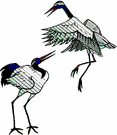More Northern Mockingbird
Here is the photo that I cropped closer to enlarge. Just an interesting note is that this bird has light arcs above and below it's eye. I have not seen anything about this type of pattern in the field guides or other sources. Interestingly I see this characteristic, or sometimes a ring around the eyes, in photos of other Northern Mockingbirds in field guides and on the internet. Not sure what this means, maybe there are so many other distinctive field markings that it was considered unnecessary to list this?
Since lighting and angle (as well as the color accuracy of computer monitors) can influence the perception of color, I have looked at a number of photos I took of this bird and have posted 3 (2 yesterday) to this blog for others to check out. Also, it is standard to consider more than one field mark when making identifications due to individual variation and other sources of error. Unfortunately I was unable to find other field marks to differentiate an immature from an adult. I thought that the tail feathers (rectrices) might help but according to Birds of North America (BNA)online, "Differences in rectrices are of limited use in aging or sexing birds due to extensive variation among individuals."
Why is this bird not a juvenile? Birds of North America online states that this species undergoes it's first molt from juvenal to "pre-basic" (immature/1st winter) plumage in late summer. Northern Mockingbirds in juvenal plumage have breasts spotted with brownish to blackish spots and streaks. This bird has some brown streaking on its neck and flank. Adult birds have a buffy wash on the their flanks. I don't know about the brownish streak on its neck, it could some leftover juvenal feathers or it could be nothing more than individual variation.
Learn more about this species. And check out a close-up of the upper tail feathers and upper tail coverts (on top of the tail upper tailfeathers at the base) by double-clicking the bottom pic. Another interesting thing about this bird is that it appears in this, and a number of other pics I took, to not have the usual white outer tail feathers (rectrices)that is mentioned as a field mark for this species.
SeEtta
Labels: birds, Northern Mockingbird










